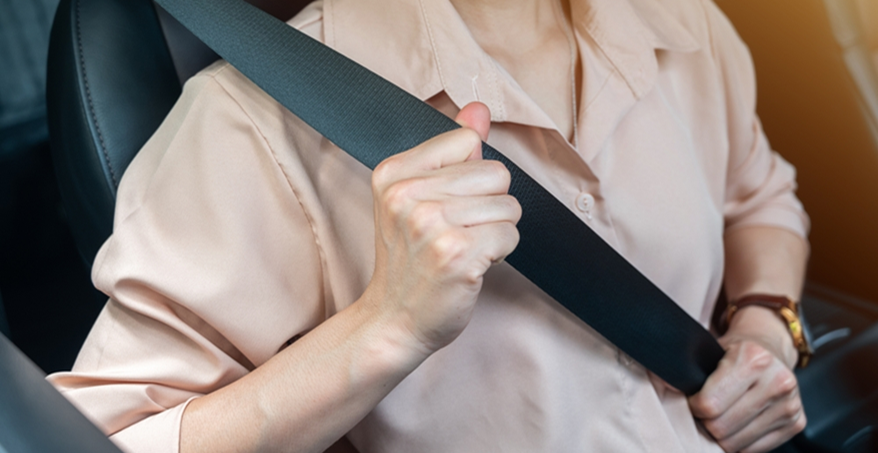Want to stay safe on the road? Discover the best defensive driving techniques to avoid accidents, minimize risks, and protect yourself from unpredictable drivers.
Mastering Defensive Driving: Stay Safe on the Road
Every year, thousands of accidents occur due to reckless driving, distractions, and poor situational awareness. While you can’t control how others drive, defensive driving techniques can significantly reduce your risk of a collision.
Defensive driving is not just about following traffic laws—it’s about anticipating potential hazards, maintaining control in unexpected situations, and making smart decisions to protect yourself and others on the road. Whether you’re a new driver or have years of experience, these essential defensive driving strategies can help you avoid accidents and improve overall road safety.
1. Stay Aware of Your Surroundings
One of the fundamental principles of defensive driving is maintaining constant awareness of what’s happening around you. This includes checking your mirrors frequently, monitoring blind spots, and scanning the road ahead for potential hazards.
- Use the 12-Second Rule – Always look at least 12 seconds ahead of your vehicle to anticipate stops, slowdowns, or obstacles.
- Check Mirrors Every 5-8 Seconds – This helps track nearby vehicles and prepares you for lane changes or sudden traffic shifts.
- Be Aware of Blind Spots – Adjust your mirrors correctly and perform shoulder checks before changing lanes.
Professional Insight: Most collisions occur because drivers fail to anticipate sudden changes in traffic flow. Highway driving, intersections, and merging lanes require heightened awareness to reduce accident risks.
2. Maintain a Safe Following Distance
Tailgating is one of the most common causes of rear-end collisions. Keeping a safe distance from the car in front of you allows for adequate reaction time in case of sudden braking.
- Follow the 3-Second Rule – Stay at least three seconds behind the vehicle in front of you. Increase this to five seconds in bad weather or heavy traffic.
- Adjust for Speed and Road Conditions – On highways or during rain, fog, or icy conditions, increase your following distance to avoid skidding or hydroplaning.
Expert Tip: If you can’t see the rear tires of the car in front of you when stopped, you’re too close. Leaving extra space can prevent low-speed crashes and reduce the risk of being pushed into another vehicle if rear-ended.
3. Expect the Unexpected from Other Drivers
Even if you follow every traffic rule, not everyone else does. Defensive drivers assume that other motorists might make mistakes and prepare accordingly.
- Watch for Erratic Behavior – Be cautious of swerving cars, sudden lane changes, or distracted drivers using their phones.
- Prepare for Red-Light Runners – Before accelerating at a green light, check both sides to ensure no one is trying to beat the signal.
- Anticipate Unsignaled Turns or Stops – Not all drivers use turn signals properly, so be prepared for sudden stops or lane changes.
Real-World Example: Studies show that left-turn crashes at intersections are among the most common accidents. A defensive driver always checks for oncoming vehicles running red lights before proceeding.
4. Keep an Escape Route Open
A key principle of defensive driving is always having a backup plan. If traffic suddenly stops or another driver loses control, having an escape route can prevent a collision.
- Avoid Driving in Blind Spots – Stay out of other drivers’ blind spots to minimize the risk of being cut off.
- Leave Yourself an Out – Don’t box yourself in between two large vehicles; maintain space to change lanes if needed.
- Position Your Car for Visibility – On multi-lane roads, stay where you have the clearest view of traffic signals, road signs, and pedestrians.
Advanced Technique: Professional drivers use the Zipper Merge Method in heavy traffic. Instead of aggressive lane cutting, they allow one car to merge at a time, preventing sudden stops and reducing congestion-related accidents.
5. Avoid Distractions and Stay Focused
Distracted driving is responsible for thousands of crashes every year. Defensive drivers minimize distractions to keep their full attention on the road.
- Put Your Phone Away – Even hands-free calls can reduce focus. If necessary, pull over to answer calls or messages.
- Minimize In-Car Distractions – Adjust GPS, climate controls, and music before driving to avoid taking your eyes off the road.
- Stay Mentally Engaged – Fatigue can be just as dangerous as distractions. If you feel drowsy, take a break or switch drivers.
Important Fact: The National Highway Traffic Safety Administration (NHTSA) reports that texting while driving increases crash risk by 23 times. Even a two-second glance at your phone at highway speeds means traveling nearly 200 feet blind.
6. Adjust for Weather and Road Conditions
Rain, snow, fog, and ice significantly impact vehicle handling and braking distances. Defensive drivers adapt their techniques to ensure safety in adverse conditions.
- Reduce Speed in Wet or Icy Conditions – Braking distances can double in rain and triple in snow. Slow down accordingly.
- Use Headlights in Low Visibility – Turn on low beams (not high beams) during rain, fog, or dusk for better visibility.
- Know How to Handle Hydroplaning – If your tires lose grip in water, ease off the gas and steer gently—don’t slam the brakes.
Pro Tip: The first 10-15 minutes of rain make roads the slickest as oil residues mix with water. Be extra cautious when driving after a dry spell.
7. Obey Speed Limits and Road Signs
Speeding reduces reaction time and increases accident severity. A defensive driver respects posted limits and adjusts speed based on traffic flow and conditions.
- Follow Advisory Speed Signs – These indicate safe speeds for curves, ramps, and intersections, even if the legal limit is higher.
- Be Cautious in Construction Zones – Speeding fines double in work zones, and sudden lane shifts increase crash risks.
- Adjust for Traffic Flow – If most vehicles around you are traveling at a reasonable pace, maintain a steady speed to reduce sudden braking.
Did You Know? Studies show that driving just 5-10 mph over the limit doubles the risk of serious injuries in an accident.
Safe Driving is Smart Driving
Defensive driving is about more than following the rules—it’s about developing the right mindset to anticipate risks, adapt to changing conditions, and stay in control. By staying alert, keeping a safe distance, and planning escape routes, you can significantly reduce your chances of an accident.
Every second on the road presents new challenges. Mastering these defensive driving techniques will not only protect you but also make you a more confident and responsible driver.


